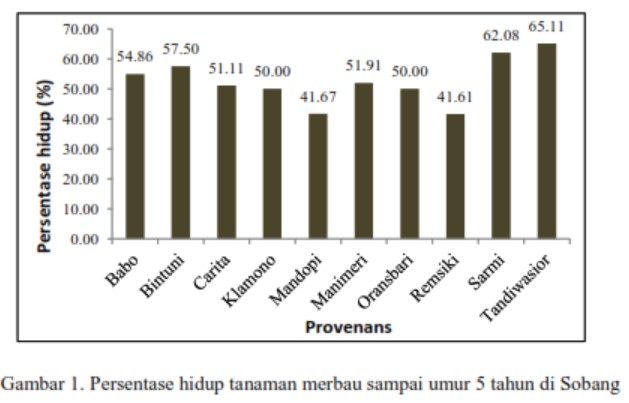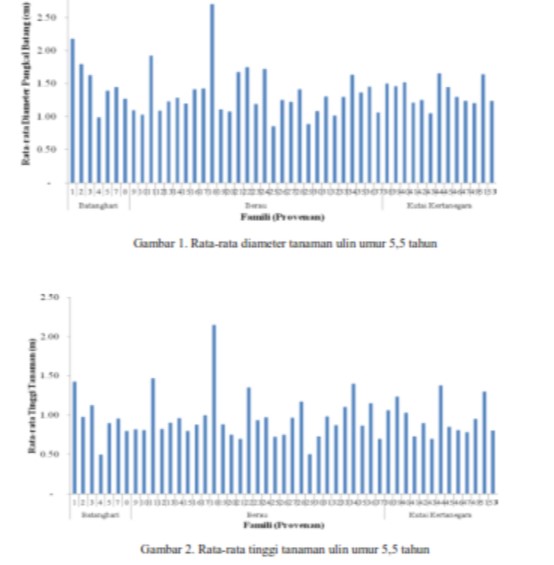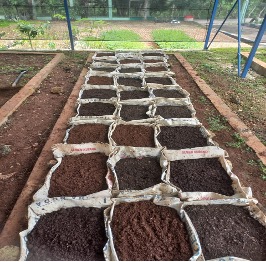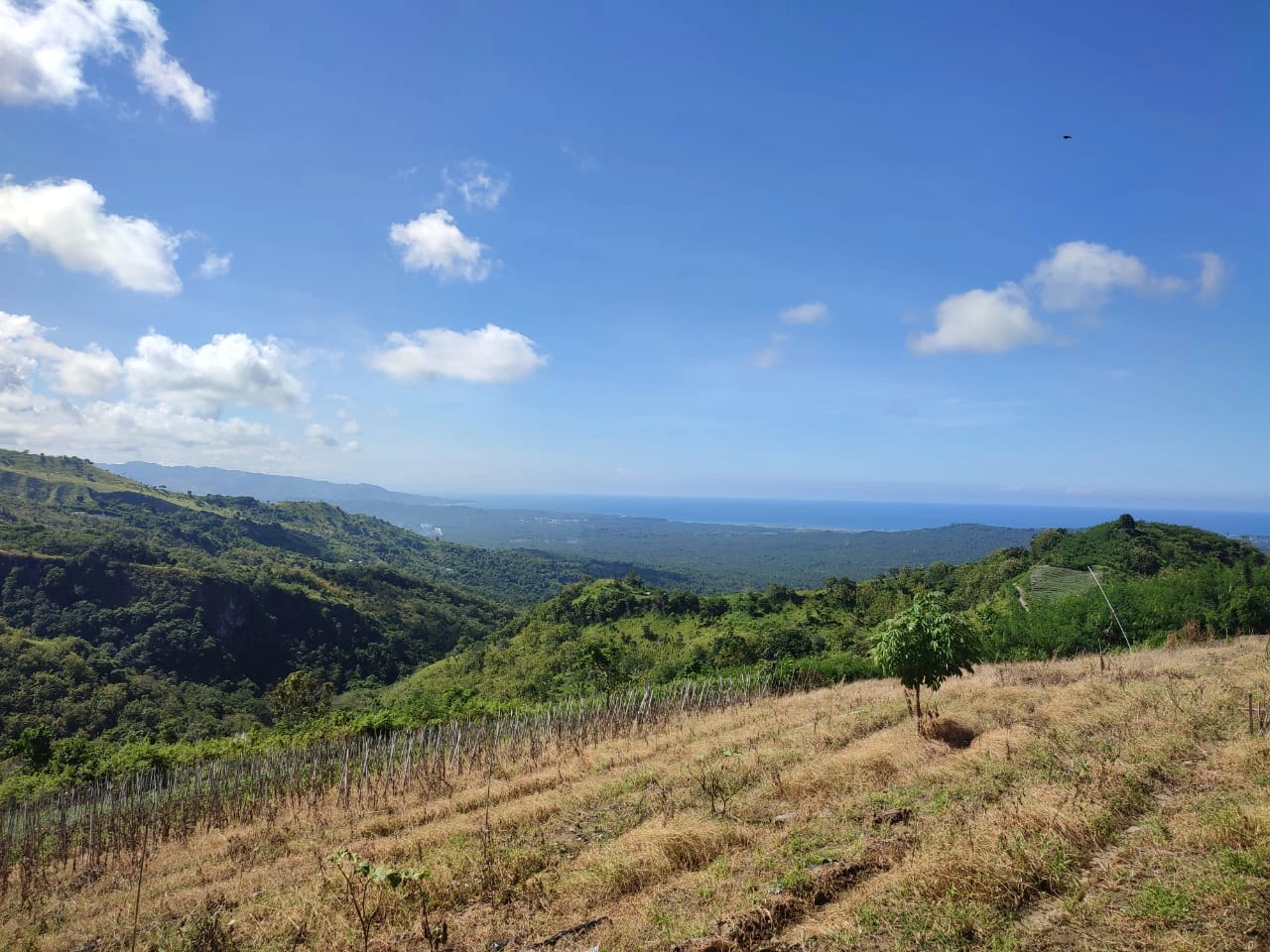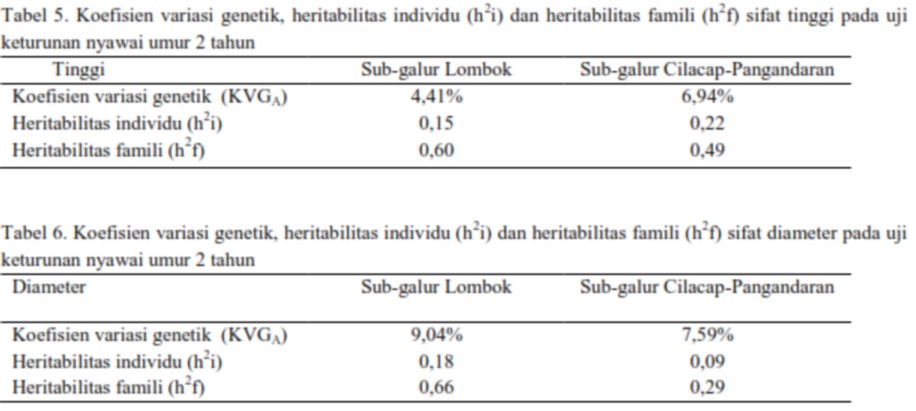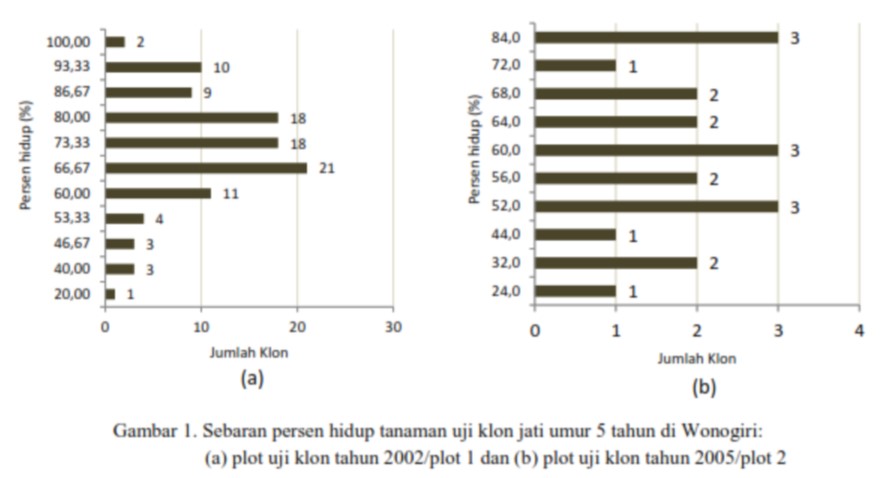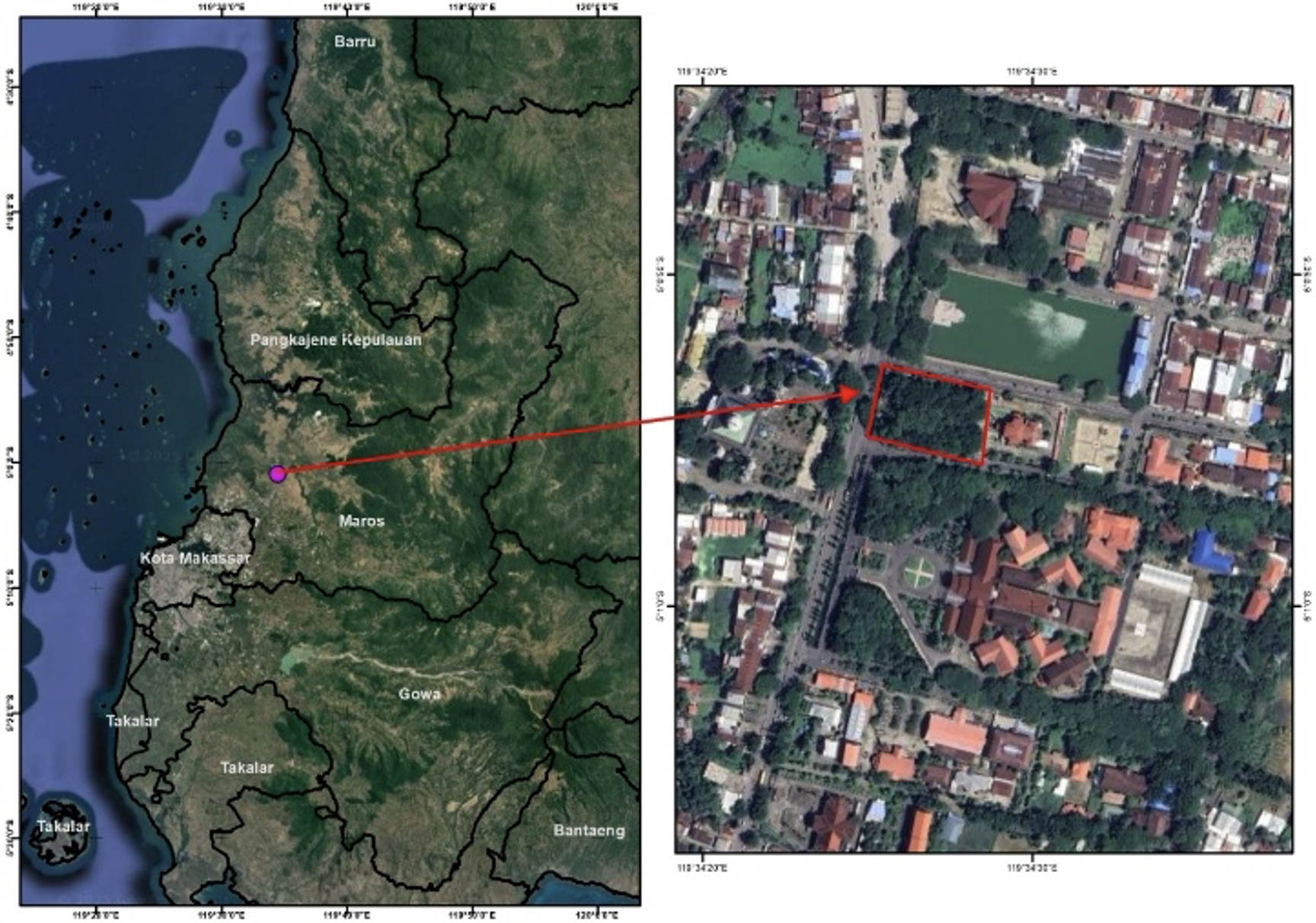Plant Growth Variation At Combined Progeny And Provenance Of 5-Year-Old Intsia Bijuga (Colebr. )O.Kuntze In Sobang, Banten
Abstract
This study was conducted to evaluate plant growth of Intsia bijuga at 5 years old in Sobang, Banten for supplying
good genetic material in the future. Establishment of the trial was conducted in 2007 using Randomized Complete
Block Design (RCBD) that consisted of 6 blocks, 100 families nested in 10 provenances, 4 treeplot for each family with
a spacing of 4 x4 m. Measurements were taken periodically every year on the survival percentage, total height and
stem diameter at the breast height or dbh. At the age of 5 years showed that the significant differences among
provenance in survival percentage that ranged from 41.61 to 65.11 %, average of plant height were 1.04 to 2.82 m
and dbh 1.24 to 1.59 cm. The growth variation families also showed significant differences in height and diameter. The
survival rate ranged from 12.5-91.67 %, average plant height were 0.52-2.55 m and dbh 0.90-2.44 cm. Individual tree
heritability estimate for height was height (0.344) while that of diameter was moderate (0.259). Family heritabilities
for height and diameter was considered moderate, namely 0.573 and 0.491 respectively. Genetic correlation between
height and diameter growth was positive and high (0.834).
##submission.copyrightStatement##
##submission.license.cc.by-nc4.footer##Copyright and License
All articles published in Wasian Journal are the property of the authors. By submitting an article to Wasian Journal, authors agree to the following terms:
-
Copyright Ownership: The author(s) retain copyright and full publishing rights without restrictions. Authors grant the journal the right to publish the work first and to distribute it as open access under a Creative Commons Attribution 4.0 International License (CC BY 4.0).
-
Licensing: Articles published in Wasian Journal are licensed under a Creative Commons Attribution 4.0 International License (CC BY 4.0). This license allows others to share, copy, and redistribute the material in any medium or format, and adapt, remix, transform, and build upon the material for any purpose, even commercially, provided that proper credit is given to the original author(s) and the source of the material

This work is licensed under a Creative Commons Attribution 4.0 International License. -
Author's Rights: Authors are permitted and encouraged to post their work online (e.g., in institutional repositories or on their website) prior to and during the submission process, as it can lead to productive exchanges and greater citation of published work.
-
Third-Party Content: If your article contains material (e.g., images, tables, or figures) for which you do not hold copyright, you must obtain permission from the copyright holder to use the material in your article. This permission must include the right for you to grant the journal the rights described above.
-
Reprints and Distribution: Authors have the right to distribute the final published version of their work (e.g., post it to an institutional repository or publish it in a book), provided that the original publication in Wasian Journal is acknowledged.
For the reader you are free to:
- Share — copy and redistribute the material in any medium or format for any purpose, even commercially.
- Adapt — remix, transform, and build upon the material for any purpose, even commercially.
- The licensor cannot revoke these freedoms as long as you follow the license terms.
Under the following terms:
- Attribution — You must give appropriate credit , provide a link to the license, and indicate if changes were made . You may do so in any reasonable manner, but not in any way that suggests the licensor endorses you or your use.
- No additional restrictions — You may not apply legal terms or technological measures that legally restrict others from doing anything the license permits.
Notices:
You do not have to comply with the license for elements of the material in the public domain or where your use is permitted by an applicable exception or limitation .
No warranties are given. The license may not give you all of the permissions necessary for your intended use. For example, other rights such as publicity, privacy, or moral rightsmay limit how you use the material.
##plugins.generic.recommendByAuthor.heading##
- Hamdan Adma Adinugraha, Mahfudz Mahfudz, Pengembangan Teknik Perbanyakan Vegetatif Tanaman Jati Pada Hutan Rakyat , Jurnal Wasian: 卷 1 期 1 (2014): June
- Hamdan Adma Adinugraha Hamdan, Mahfudz Mahfudz, Genetic Parameter Estimation of Teak Clonal Test At 5 Years Old in Wonogiri, Central Java , Jurnal Wasian: 卷 3 期 1 (2016): June

